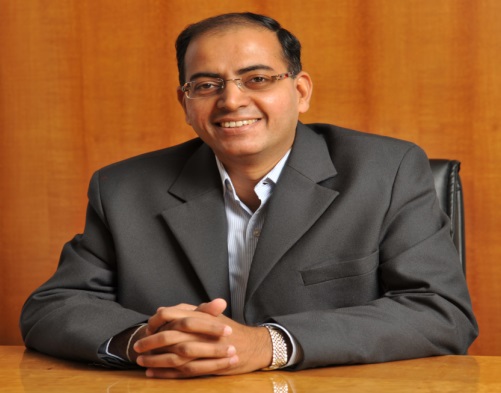HDFC Short Term Debt Fund has won the Morningstar Best Fund Award in short duration category for 2019. Anil Bamboli, Senior Fund Manager - Fixed Income, HDFC AMC, chats with Morningstar about his winning strategy.

Congratulations on winning the Short Duration Category Award for HDFC Short Term Debt Fund. How has been 2018 and what worked in your favour?
Thank you very much. Last year was volatile for fixed income markets with sharp movements in oil prices, rupee, rise in credit spreads especially for Non Banking Financial Company (NBFCs) and unpredictably low food inflation. However, we continued to maintain a medium term approach towards fund management rather than being swayed by short term noises. We focussed on picking relatively undervalued credits, while adjusting the portfolio duration on the basis of our overall view on interest rates and shape of the yield curve. Our strategy to keep duration at the lower end of the requirement played out well given the rising yields and helped us to deliver superior returns.
What factors do you look at while buying paper in this fund?
In all our investment decisions, we are guided by HDFC Mutual Fund’s investment philosophy which is based on our objective of delivering optimal risk-adjusted returns while focussing on safety, liquidity and returns (SLR), generally in that order. The exposure to AAA or equivalent credit rated instruments is normally in excess of 80% of the portfolio. As on 28 February 2019, the exposure to non- AAA exposure was less than 7%.
Our Credit Risk Assessment framework lays emphasis on Four C’s of Credit - Character of Management, Capacity to Pay, Collateral pledged to secure debt and Covenants of debt. Only after detailed analysis, a company is approved for investing. Further, we have internal framework which help us maintain both absolute and relative investment exposure limits for individual credits within prudent limits.
There has been a fair bit of turmoil in the credit markets lately. How are you trying to shield the portfolios?
We have consistently followed the philosophy of SLR, generally prioritized in the order of Safety (Superior credit quality companies with low probability of default), Liquidity (Endeavour to invest in securities with better liquidity) and Returns (Better risk reward ratio). Even in the best of credit environments, our endeavour is not to take undue credit risk, even if that means marginally lower Yield to Maturity (YTM). Further, our relatively conservative approach to credit selection has helped us minimize unfavourable outcomes even during challenging credit environments.
SIPs are generally associated with equity funds. Do you think it is a good idea for retail investors to invest in debt funds through SIPs? What are the pros and cons of this approach?
There are two major advantages of investing through SIPs. Firstly, it instils a sense of discipline in an investor to regularly invest a particular amount of money on a periodic basis which helps build a corpus over a long period.
Secondly, SIP helps in averaging the cost over the period of investment. It should be noted that yields and returns of a debt scheme are inversely related. Thus when yields rise, historical returns might not look good and thus investor might avoid investing. However, the advantage of investing at that time is that all the incremental inflows are invested at higher yields and likely to earn better returns over medium term. Investors should invest keeping in mind their investment goals and time horizon as debt funds are subject to interest rate volatility which in turn might impact the returns.
Thus, in my opinion, SIP is a preferred way to save and invest money in an orderly manner, especially for retail investors who could be relatively less familiar with vagaries of fixed income markets and debt funds.
How do you plan to sustain the superior track record going ahead? What challenges do you foresee?
We intend to continue following our approach of disciplined investing viz. prudently selecting securities and managing duration keeping in mind our medium term view. However, we will remain flexible in our strategy and will be open to adapting it depending on our assessment of factors impacting fixed income markets.
In terms of challenges, we expect the next one year to be no different from last couple of years, with market participants being put to test on both credit and interest rate volatility fronts. Oil prices, rebound in food inflation, rise in credit spreads etc. are few key risks which can materialise over the medium term. However, with the fund’s disciplined approach from the perspective of both duration and credit selection, we believe HDFC Short Term Debt Fund is better placed to face volatility.
The fund predominantly invests in high-quality securities and maintains portfolio Macaulay Duration range of 1 to 3 years, as mandated by regulatory guidelines. As on end of February 2019, the fund had a Macaulay Duration of 1.27 years with over 93% of the portfolio invested in AAA & equivalent or above rated securities.
What would be your advice be to fixed income investors at this juncture?
My advice to fixed income investors will be five fold – (1) invest in fixed income funds in a disciplined manner, preferably through SIPs (2) Choose a scheme in line with respective risk appetite and investment goals (3) Invest in a scheme whose average portfolio maturity is closer to envisaged time horizon, (4) Don’t get influenced by high returns of past and (5) Understand the scheme features like credit risk, duration etc.
Currently, we believe that the short to medium end of the yield curve offers a better risk adjusted investment option. Though the near term inflation outlook remains benign due to low food prices and range bound oil prices, we prefer to maintain a cautious stance considering expectation of uptick in growth in FY20, credit growth outpacing deposit growth, possibility of food inflation rebounding and likely fiscal pressure. Hence, we continue to recommend investment in short to medium duration debt funds.